Nasal administration is frequently used for the application of nasal decongestants and vasoconstrictors.
However, some preparations when used with excessive frequency may cause ulceration of the nasal mucosa. This happens especially in those who regularly use substances of abuse such as cocaine, which in severe cases also leads to necrosis of the nasal septum.
The transcutaneous route allows the administration of the drug on the site of action. The pharmaceutical form most used in this way are creams, ointments, powders and oils. Depending on the characteristics of the pharmaceutical form and the characteristics of the drug molecule, the latter may have a local effect (if no absorption occurs) or systemic (if absorbed).
The epidermis is composed of several layers, the most external of which is the stratum corneum, consisting of several layers of keratinized enucleated cells that make it difficult to penetrate drugs, especially hydrophilic molecules, into the innermost layers. The dermis, on the other hand, is the deepest layer of the skin, is vascularized and allows the spread of the metabolites from the blood to the epidermis. It is a tissue that confers the strength and elasticity of the skin, as it is rich in collagen fibers. Absorption of the transcutaneous route can be determined by Fick's Law, defined as follows:
dQ/dT = (D x Kr/e) x S (C1-C2)
dQ/dT= diffusion rate (amount of substance absorbed in the unit of time)
D = distribution coefficient
Kr = partition coefficient (indicates if the drug is more water-soluble or liposoluble)
e = thickness of the membrane
S = surface of the absorption zone
(C1-C2) = difference in concentration at the sides of the membrane
According to Fick's law, the more the drug is lipophilic, the faster it spreads through the membrane. To improve the absorption of the drug, it is important to choose the appropriate vehicle substance, with which to prepare the pharmaceutical form in which the active substance will be suspended.
It continues in part 3..
Bibliography:
• Goodman and Gilman - "Il Manuale - Le Basi Farmacologiche della Terapia" - Zanichelli Editore (2015)
• Paola Dorigo - "Farmacologia Generale" - CEDAM (2006)
• Paolo Colombo, Andrea Gazzaniga, Elena Vidale – “Principi di tecnologie farmaceutiche” – Zanichelli Editore (2015)
Note:
[1]. Angiography is a radiological examination that allows the study of the morphology, the course and possible alterations of certain vascular districts. The blood, unlike the bones, has a radio-opacity similar to that of the surrounding tissues, so it is essential to use a
contrast medium.
[2]. The Emato-Encephalic Barrier is a structure that has the function of protecting the brain tissue from toxic agents, which may be present in the blood, allowing instead the passage of useful substances to the metabolic functions.
Previous Posts:
• Introduction to Pharmacology [ENG/ITA]
• The routes of drug administration -part 1 [ENG/ITA]
<><><><><><><><><><><><><><><>
Le vie di somministrazione dei farmaci - parte 2
Via intramuscolare
Il farmaco viene iniettato direttamente nel muscolo grande gluteo, consentendo l’iniezione di volumi anche superiori ai 5mL. L’assorbimento dipende però sempre dal volume iniettato, dall’osmolarità della soluzione e dalle caratteristiche chimico-fisiche della molecola di farmaco, inoltre influisce anche l’attività a cui il muscolo è sottoposto, in quanto è direttamente proporzionale al grado di vascolarizzazione del tessuto.
Per ottenere un assorbimento del farmaco nell’arco dei 10-30 minuti, il farmaco va iniettato in soluzione acquosa, mentre per ottenere un effetto prolungato nel tempo, possiamo somministrare farmaci come profarmaci estereo.
Alcuni farmaci steroidei vengono somministrati in forma di profarmaci esteri, che una volta iniettati precipitano in situ a causa della loro scarsa solubilità in ambiente acquoso, per poi attivarsi grazie all’azione delle esterasi e passare in soluzione.
Via intra arteriosa
Questo tipo di somministrazione può essere eseguito solo da persona esperto. È utile per la somministrazione di farmaci come bolo unico o per infusione continua a velocità controllata (fleboclisi), che devono agire in un particolare tessuto o organo, come gli antineoplastici o in altri casi o analisi, come l’angiografia[1].
Via Intratecale
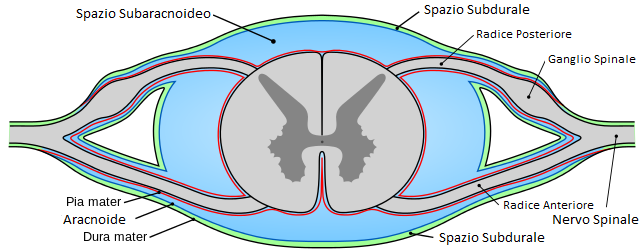 Fonte immagine
Fonte immagine
Molti farmaci non possono diffondere dal sangue al liquido cerebrospinale, in quanto non passano la barriera ematocefalica[2]. Attraverso questa via di somministrazione possono essere iniettati diverse tipologie di farmaci.
Alcuni esempi di sostanze che possono essere somministrate per questa via sono, per esempio, i farmaci impiegati nell’anestesia subaracnoidea, terapia del dolore e alcuni chemioterapici per il trattamento di tumori cerebrali o spirali, nel trattamento delle meningiti.
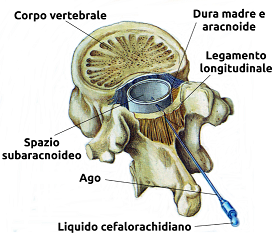 Fonte immagine
Fonte immagine
L'iniezione viene eseguita in zona lombare o nella cavità ventricolare, direttamente nello spazio subaracnoideo.
Per l’iniezione del farmaco sarà necessaria la precedente aspirazione del liquido cefalorachidiano, in volume pari a quello di sostanza che verrà iniettata.
Via intraperitoneale
Offrendo un’ampia superficie di assorbimento, questa via di somministrazione viene utilizzata spesso nelle sperimentazioni sugli animali, raramente negli esseri umani, perché può provocare adesioni o infezioni nei tessuti interessati. Una volta iniettato, il farmaco passa confluisce al fegato attraverso la vena posta, dove può essere metabolizzato.
Via Polmonare o Inalatoria
La via polmonare permette un assorbimento molto rapido dei farmaci costituiti da particelle di dimensione inferiore a 1-2 µm, a livello alveolare data la grande estensione e la ricca vascolarizzazione della superficie assorbente garantendo l’assenza del metabolismo epatico. Se le particelle presentano un diametro superiore ai 5 µm, il principio attivo si fermerà ed espleterà la sua azione, a livello della mucosa della trachea.
Per inalazione possono essere assunti farmaci gassosi o volatili in soluzioni che, attraverso un nebulizzatore, vengono atomizzate e quindi possono essere assunte con l’aerosol.
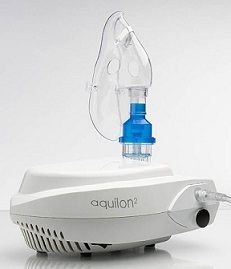 Fonte immagine
Fonte immagine
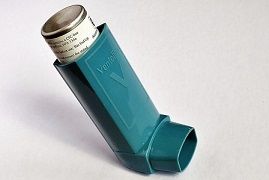 Fonte immagine
Fonte immagine
I farmaci inalati possono essere rapidamente assorbiti nella mucosa e nell’epitelio polmonare. Un esempio, sono i farmaci cortisonici e broncodilatatori per il trattamento dell’asma.
Lo svantaggio è però, che la dose non può essere regolata e molti farmaci possono produrre irritazione alla mucosa e all’epitelio polmonare
Applicazioni topiche
via Mucosale
Questo metodo che permette di ottenere degli effetti locali e consiste nella somministrazione di farmaci sulle mucose di: gengiva, congiuntiva, nasofaringe, colon, vagina, uretra e vescica urinaria. La ridotta stratificazione e la mancanza di uno strato corneo consentono la rapida penetrazione del farmaco attraverso le mucose, che possono passare nel circolo ematico.
Somministrazione Nasale
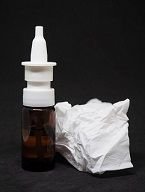 Fonte immagine
Fonte immagine
La somministrazione nasale viene frequentemente impiegata per l’applicazione di decongestionanti e vasocostrittori nasali.
Tuttavia, alcune preparazioni se utilizzate con una frequenza eccessiva possono provocare ulcerazioni alla mucosa nasale. Questo avviene soprattutto in chi regolarmente fa uso di sostanze d’abuso come la cocaina, che nei casi più gravi porta anche alla necrosi del setto nasale.
Via Dermica o Transcutanea
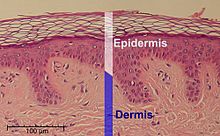 Fonte immagine
Fonte immagine
La via transcutanea consente la somministrazione del farmaco sulla sede d’azione. La forma farmaceutica più usata in questa via sono creme, unguenti, polveri e olii. A seconda delle caratteristiche della forma farmaceutica e delle caratteristiche della molecola di farmaco, quest’ultimo può avere un effetto locale (se non avviene l’assorbimento) o sistemico (se viene assorbito).
L’epidermide è composta da diversi strati, di cui il più esterno è lo strato corneo, costituito da vari strati di cellule enucleate cheratinizzate che rendono difficile la penetrazione dei farmaci, specialmente le molecole idrofile, negli strati più interni.
Il derma è invece lo strato più profondo della pelle, è vascolarizzato e permette la diffusione dei metaboliti dal sangue all'epidermide. È un tessuto che conferisce la resistenza e l'elasticità della pelle, in quanto ricco in fibre collagene.
L’assorbimento della via transcutanea può essere determinato dalla Legge di Fick, definita come segue:
dQ/dT = (D x Kr/e) x S (C1-C2)
dQ/dT= velocità di diffusione (quantità di sostanza assorbita nell'unità di tempo)
D = coefficiente di diffusione
Kr = coefficiente di ripartizione (indica se il farmaco è più idrosolubile o liposolubile)
e = spessore della membrana
S = superficie della zona di assorbimento
(C1-C2) = differenza di concentrazione ai lati della membrane
Secondo la legge di Fick, più il farmaco è lipofilo, tanto più velocemente diffonderà ne lipofilo il farmaco, tanto più velocemente diffonde attraverso la membrana.
Per migliorare l’assorbimento del farmaco, risulta importante scegliere il veicolo adatto con cui allestire la forma farmaceutica in cui il principio attivo sarà sospeso.
Prosegue nella parte 3...
Bibliografia:
• Goodman and Gilman - "Il Manuale - Le Basi Farmacologiche della Terapia" - Zanichelli Editore (2015)
• Paola Dorigo - "Farmacologia Generale" - CEDAM (2006)
• Paolo Colombo, Andrea Gazzaniga, Elena Vidale – “Principi di tecnologie farmaceutiche” – Zanichelli Editore (2015)
Note:
[1]. L’angiografia è un esame radiologico che permette lo studio della morfologia, il decorso ed eventuali alterazioni di determinati distretti vascolari. Il sangue, a differenza delle ossa, ha una radioopacità simile a quella dei tessuti che lo circondano, quindi risulta indispensabile l’utilizzo di un mezzo di contrasto.
[2]. La Barriera Emato-Encefalica è una struttura che ha la funzione di proteggere il tessuto cerebrale da agenti tossici, che possono essere presenti nel sangue, permettendo invece il passaggio delle sostanze utili alle funzioni metaboliche.
Post precedenti:
• Introduction to Pharmacology [ENG/ITA]
• The routes of drug administration -part 1 [ENG/ITA]

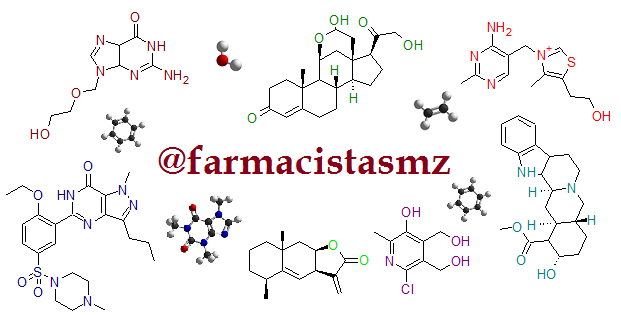
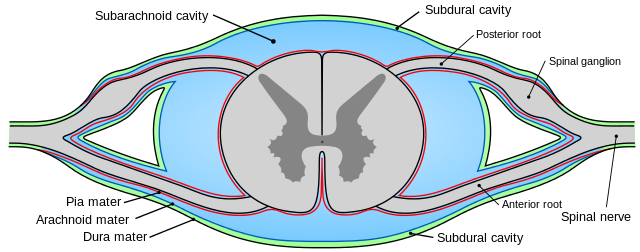













bellissimo articolo...ma il logo...è toghissimoooo
Ti ringrazio veramente tanto @sardrt :)
Boost Your Post. Send 0.100 STEEM or SBD and your post url on memo and we will resteem your post on 5000+ followers. check our account to see the follower count.
muy bien felicitaciones y éxito
Muchas gracias por tu comentario! :)
Congratulations @farmacistasmz! You have received a personal award!
Click on the badge to view your Board of Honor.
Do not miss the last post from @steemitboard:
Congratulations @farmacistasmz! You received a personal award!
You can view your badges on your Steem Board and compare to others on the Steem Ranking
Do not miss the last post from @steemitboard:
Vote for @Steemitboard as a witness to get one more award and increased upvotes!